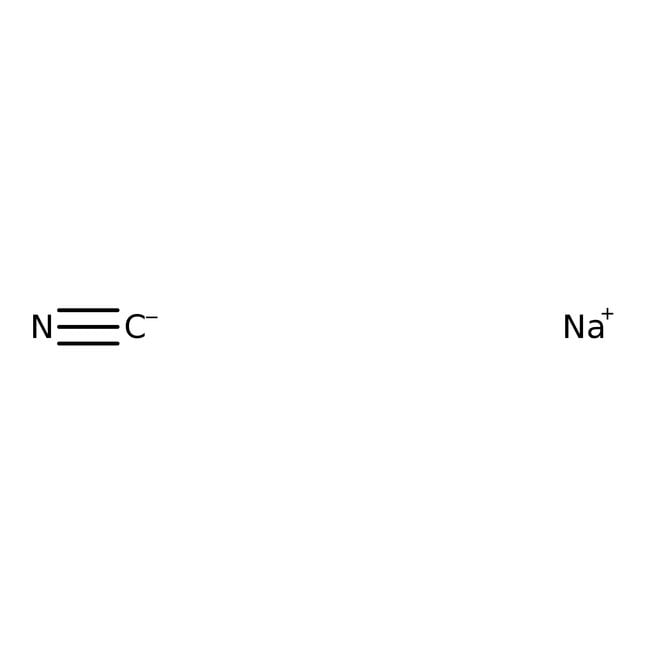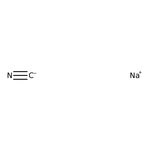Search Thermo Fisher Scientific
Cianuro de sodio, gránulos, 98 %, Thermo Scientific Chemicals



Cianuro de sodio, gránulos, 98 %, Thermo Scientific Chemicals
Identificadores químicos
Especificaciones
Descripción
This Thermo Scientific Chemicals brand product was originally part of the Alfa Aesar product portfolio. Some documentation and label information may refer to the legacy brand. The original Alfa Aesar product / item code or SKU reference has not changed as a part of the brand transition to Thermo Scientific Chemicals.
El cianuro de sodio se utiliza como material de partida para la preparación de compuestos de Reissert y bromuro de cianógeno, cloruro cianúrico y cloruro de cianógeno. Actúa como catalizador para la aminólisis de ésteres a amidas primarias. Además, se utiliza para fumigación, galvanoplastia, extracción de oro y plata en la industria minera. En la síntesis orgánica, participa en la reacción de cianación de los haluros de alquilo en condiciones de transferencia de fase.
Solubilidad
Soluble en agua, amoníaco, metanol y etanol. Ligeramente soluble en dimetilformamida. Insoluble en dimetilsulfóxido.
Notas
Higroscópico. No almacenar cerca de ácidos. Incompatible con agentes oxidantes fuertes y dióxido de carbono.
Figuras
Documentos y descargas
Certificados
Preguntas frecuentes
Citas y referencias
Seguridad y manipulación
Classification of the substance or mixture
CLP classification - Regulation(EC) No 1272/2008
Label Elements
Signal Word
Danger
Hazard Statements
H300 + H310 + H330 - Fatal if swallowed, in contact with skin or if inhaled
H372 - Causes damage to organs through prolonged or repeated exposure
H410 - Very toxic to aquatic life with long lasting effects
Physical hazards
H290 - May be corrosive to metals
EU Specific Hazard Statements
EUH032 - Contact with acids liberates very toxic gas
Precautionary Statements
P280 - Wear protective gloves/protective clothing
P302 + P350 - IF ON SKIN: Gently wash with plenty of soap and water
P304 + P340 - IF INHALED: Remove person to fresh air and keep comfortable for breathing
P310 - Immediately call a POISON CENTER or doctor/physician
P330 - Rinse mouth
P390 - Absorb spillage to prevent material damage